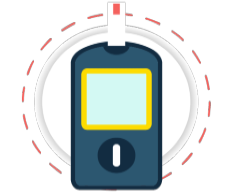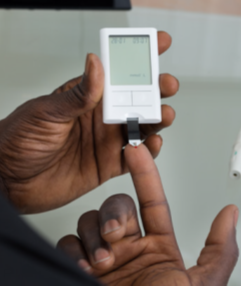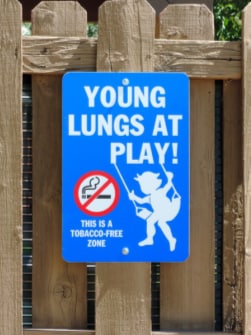Diabetes and Prediabetes

More than 37 million people in the United States have diabetes. People with diabetes are also at higher risk of heart disease, stroke, and other serious complications like kidney failure, blindness, and amputation of a toe, foot, or leg. People with diabetes spend more on health care and miss more workdays compared to people who don’t have diabetes.
Some people are at higher risk of type 2 diabetes, including those who:
- Are overweight or have obesity.
- Are age 45 or older.
- Have a parent, brother, or sister with type 2 diabetes.
- Are physically active less than 3 times a week.
- Had gestational diabetes (diabetes during pregnancy) or gave birth to a baby who weighed more than 9 pounds.
- Are an African American, Hispanic or Latino, American Indian, Alaska Native, Pacific Islander, or Asian American person.
In the United States:

37.3 MILLION
Americans are living with diabetes.

96 MILLION
US adults have prediabetes.

$327 BILLION
is the annual estimated cost of diabetes.

1 IN 4 US ADULTS
with diabetes don’t know they have it.
Preventable Risk Factors and CDC’s Response
Some risk factors for type 2 diabetes can’t be changed, such as age and family history, but some can, such as having prediabetes, being overweight, eating unhealthy food, being inactive, and smoking. CDC works to help people reduce those modifiable risk factors so they can prevent or delay type 2 diabetes and improve their overall health.
Prediabetes

Prediabetes is a serious health condition in which blood sugar levels are higher than normal, but not high enough yet to be diagnosed as type 2 diabetes. A person with prediabetes is at high risk of type 2 diabetes, heart disease, and stroke. An estimated 96 million US adults—more than 1 in 3—have prediabetes, and more than 8 in 10 of them don’t know they have it.
CDC’s Response
CDC’s Division of Diabetes Translation supports programs and policies that help people prevent type 2 diabetes and improve the health of everyone living with diabetes. The CDC-led National Diabetes Prevention Program (National DPP) is a public-private partnership working to build a nationwide system to deliver an affordable, evidence-based lifestyle change program proven to prevent or delay type 2 diabetes. Participants in the program learn to make healthy food choices, be more physically active, and find ways to cope with problems and stress. These lifestyle changes can cut their risk of developing type 2 diabetes by as much as 58% (71% for those 60 or older).
In April 2018, the lifestyle change program became a covered service for Medicare beneficiaries with prediabetes. This is the first preventive service model from the Center for Medicare & Medicaid Innovation that has been expanded into the Medicare program—a landmark for public health.
CDC funds all 50 states, the District of Columbia, national organizations, and several large city health departments to:
- Improve awareness of prediabetes among health care providers and people at risk.
- Increase access to and enrollment in the National DPP lifestyle change program.
- Increase coverage for the lifestyle change program among public and private payers and employers.
- Improve screening and testing for prediabetes and refer people who are eligible to the lifestyle change program.
In partnership with the American Medical Association and the Ad Council, CDC leads the award-winning Do I Have Prediabetes? campaign. The campaign is the first ever to raise awareness across the nation about prediabetes. The campaign reaches millions of people and encourages them to take a 1-minute test at DoIHavePrediabetes.org. The campaign website also links to organizations delivering the National DPP lifestyle change program.
Overweight and Lack of Physical Activity

People who have overweight or obesity are at increased risk of type 2 diabetes. In the United States, nearly 74% of adults have overweight or obesity. Although the rate of new diabetes cases has decreased in recent years, the number of adults with diagnosed diabetes has nearly doubled in the last 2 decades as the US population has increased, aged, and become more overweight.
Not getting enough physical activity can raise the risk of type 2 diabetes. That’s because physical activity helps control blood sugar, weight, and blood pressure, as well as raise “good” cholesterol and lower “bad” cholesterol. It can also help people with diabetes prevent heart and blood flow problems, reducing the risk of heart disease and nerve damage. However, only 24% of adults and 16.5% of high school students meet the guidelines for aerobic and muscle-strengthening activity.
CDC’s Response
CDC’s Division of Nutrition, Physical Activity, and Obesity develops and shares proven approaches that make healthy living easier, which can help people reduce their risk of type 2 diabetes. For example, the division works with:
- Hospitals to support breastfeeding mothers.
- Early care and education (ECE) centers to promote healthy eating standards.
- Workplaces to change policies so that employees have more healthy food choices.
- Communities to promote improvements in equitable community design that make physical activity safe and convenient for all persons.
Smoking

The risk of developing type 2 diabetes is 30% to 40% higher for people who currently smoke than for those who don’t. Evidence shows that smoking is associated with increased belly fat, a known risk factor for type 2 diabetes. The more cigarettes a person smokes, the higher their risk of developing type 2 diabetes. People with diabetes who smoke are more likely than people who don’t smoke to have trouble managing their blood sugar.
People with diabetes who smoke also have higher risks of serious complications, such as heart disease, kidney disease, and poor blood flow in the legs and feet that can lead to infections, ulcers, and amputations. Other complications include retinopathy (eye disease that can cause blindness) and peripheral neuropathy (nerve damage in the arms and legs that causes numbness, pain, weakness, and poor coordination).
About 34 million US adults smoke cigarettes, and 58 million people who don’t smoke are exposed to secondhand smoke.
CDC’s Response
CDC’s Office of Smoking and Health is at the forefront of the nation’s efforts to reduce deaths and prevent chronic diseases that result from commercial* tobacco use, including type 2 diabetes. OSH prioritizes health equity by creating resources and opportunities for all people to be as healthy as possible.
CDC and its partners promote efforts to:
- Prevent young people from starting to use tobacco.
- Promote quitting among adults and young people.
- Reduce people’s exposure to secondhand smoke.
- Advance health equity by identifying and eliminating tobacco-related disparities.
Since 2012, CDC has been educating the public about the consequences of smoking and exposure to secondhand smoke and encouraging people who smoke to quit through its Tips From Former Smokers® (Tips®) education campaign. The Tips campaign features real people who are living with serious health conditions caused by smoking and secondhand smoke exposure. The newest Tips series adds compelling stories from family members who take care of loved ones affected by a smoking-related disease or disability.
Tips connects people who smoke with resources to help them quit, including 1-800-QUIT-NOW, which directs people to free services from their state quitlines.
∗When CDC references tobacco on this web page, we are referring to the use of commercial tobacco and not the sacred and traditional use of tobacco by some American Indian communities.
Diabetes Complications and CDC’s Response

CDC strives to safeguard the health and improve the quality of life of all people with diabetes. Central to that effort is helping them prevent or reduce the severity of diabetes complications, including heart disease (the leading cause of early death among people with diabetes), kidney disease, blindness, and nerve damage that can lead to lower-limb amputations.
CDC’s Response
Diabetes self-management education and support (DSMES) services help people meet the challenges of self-care by providing them with the knowledge and skills to deal with daily diabetes management: eating healthy foods, being active, checking blood sugar, taking medicines, and managing stress. DSMES has been shown to reduce A1C levels (average blood sugar over the last 2 to 3 months), reduce the onset and severity of diabetes complications, improve quality of life, and lower health care costs.
People who live in rural areas have higher rates of diabetes compared to people who live in urban areas, but 62% of rural counties have limited DSMES services. Using telehealth (delivery by phone, Internet, or videoconference) allows more patients in rural areas to benefit from DSMES. CDC funds state and local health departments to improve access to, participation in, and health benefit coverage for DSMES, with emphasis on programs that achieve Association of Diabetes Care & Education Specialists accreditation or American Diabetes Association recognition. These programs meet national quality standards and may be more sustainable because of reimbursement eligibility.